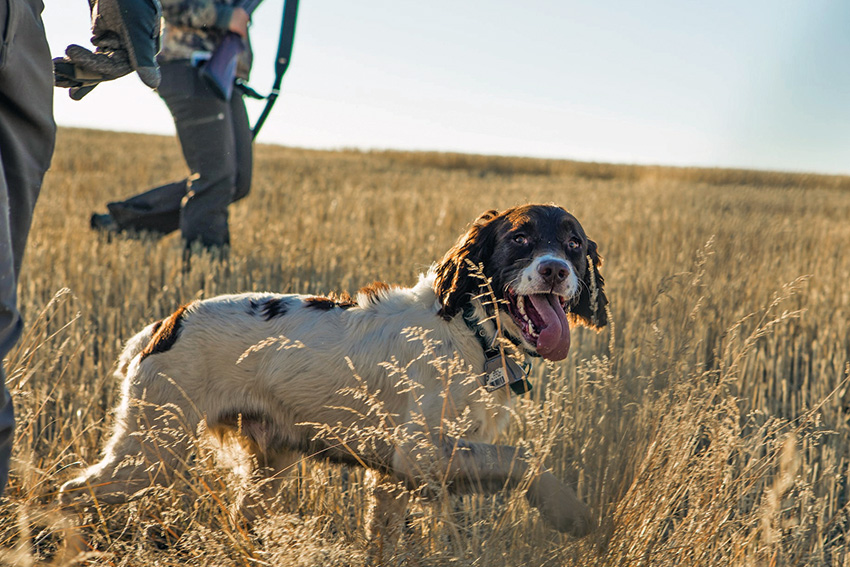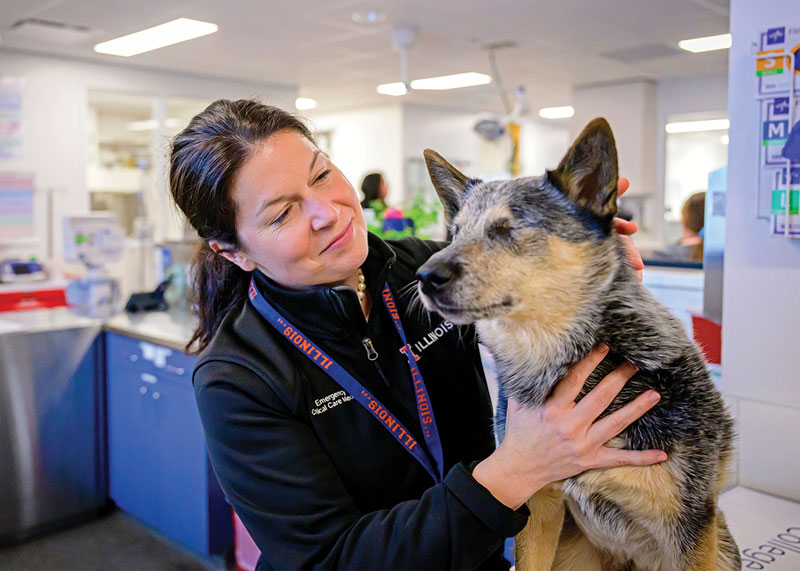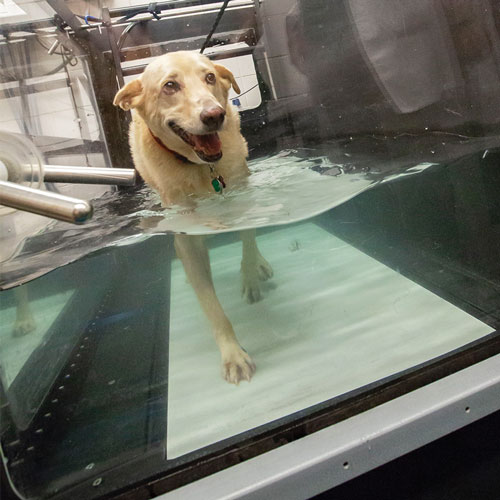Hunting occurs worldwide for purposes of food acquisition, control of wildlife populations, elimination of pest animals, and sport.
Working-level hunting breed dogs are intense, high-drive dogs that will work despite severe illness or pain. Their intense drive to work makes detecting and diagnosing problems more challenging. The veterinarian and handler need to be knowledgeable about each individual dog to recognize subtle changes that might signal illness. Additionally, these dogs often work at a distance and out of eyesight of their handler, so they may have substantial exposure or injury that is not witnessed, further complicating accurate history acquisition.
Hunting dogs typically work entirely outdoors in rural to wilderness environments, and many live outdoors even when not working, further increasing exposure.
Through sustained or repeated contact with other animal species and their habitats, these dogs may be affected by infectious diseases, including parasitic infections, not commonly seen in dogs.
Identifying disease and disease transmission in hunting dogs is important not only for the dogs’ health but also as a means of surveillance (the dog as a sentinel) of infectious disease prevalence in environments shared by other potentially susceptible species, including humans.
Hunting dogs have an increased risk of exposure to infectious disease because of direct or indirect contact with wildlife reservoirs, exposure to insect vectors, and the practice of feeding the dogs raw tissues of quarry species or allowing them access to areas where game is field-dressed and entrails can be ingested.

Fungal and Bacterial Infections
Infection with Pythium insidiosum, a fungal-like pathogen, is of special concern in dogs working in bodies of water. In the U.S., pythiosis occurs most commonly in the southern states and California and may manifest as cutaneous or GI disease. Humans are also susceptible to environmental exposure, but the infection is not zoonotic.
Leptospirosis is a bacterial disease for which hunting dogs have increased risk, especially to serovar grippotyphosa. With leptospirosis, illness occurs more frequently in dogs than in humans. Infected dogs can be a source of human infection.
Hunting dogs and hunters may be exposed to plague (Yersinia pestis) when hunting in enzootic areas. Dogs are often subclinically affected but may still be a source of transmission to humans. Other bacterial diseases of public health significance have been reported as isolated findings (bovine TB in working foxhounds in the U.K.) or studies of hunting dogs with no non-hunting dog data for comparison.
Tick-borne Diseases
Many studies document a high exposure rate to tick-borne diseases (ehrlichiosis, anaplasmosis, borelliosis, babesiosis, hepatozoonosis, bartonellosis, coxiellosis) in hunting dogs worldwide. Co-infection with multiple vector-borne disease agents is common. Hunting dogs may also increase human exposure to tick-borne pathogens by carrying unattached ticks into proximity of handlers. Dogs may acquire Hepatozoon americanum infection by swallowing an infected tick while self-grooming or ingestion of infected ticks on a prey species or tissues of a prey species containing H. americanum cystozoites.
Protozoan Parasites
Leishmaniasis is a zoonotic disease for which dogs are the principal domestic reservoir host. In the U.S., infection is endemic in hunting dogs, with an average rate of between 20% and 27% of hunting hounds testing positive for the organism. Leishmania infection is maintained in the U.S. by vertical transmission rather than vector (sand fly) transmission. Infected dogs pose a public health risk as well as source of infection of wild canids. Infection in dogs is often asymptomatic, but co-infection with tick-borne disease increases the likelihood of progression to clinical leishmaniasis. Canine Leishmania vaccines are available in Europe and Brazil, but none are licensed in the U.S.
Infection with the protozoan parasite Trypanosoma cruzi (American trypanosomiasis, or Chagas disease) is more common in hunting dogs, which move between domestic and natural areas and thus may participate in both the domestic and sylvatic cycles of transmission. In addition to vector-mediated transmission (Reduviidae), infection with T. cruzi may be transmitted by vertical transmission, blood transfusion, or exposure to infected tissues.
Toxoplasma gondii, Neospora caninum and Cryptosporidium spp. are other protozoan pathogens found with increased frequency in hunting dogs. Dogs may transmit infection to other species, including humans.
More Parasites
Intestinal parasites in hunting dogs, like other infections, are important not only from the standpoint of individual health of the dog but also the potential for hunting dogs to disseminate infective ova over large areas. In moving across natural, rural, and residential areas and through consumption of uncooked carcasses, hunting dogs have a heightened potential for exposure to parasitic agents. Therefore, intensive endoparasite control measures are warranted.
Echinococcus spp., a zoonotic cestode with reservoirs in wild canids and for which dogs serve as a definitive host, is of particular concern because of the potential for devastating disease in humans. Other parasitic infections found more frequently in hunting dogs include Capillaria plica and Spirocerca lupi.
Leeches of various species are present in diverse microenvironments and may parasitize dogs. Oral parasitism is most commonly reported, but other areas of attachment, usually unhaired surfaces (nasal mucosa, interdigital skin, ventral abdomen, prepuce), are possible.
Heartworm
Heartworm infection is more common in unprotected hunting dogs than in pet dogs. In hunting dogs on heartworm preventatives, failure of prophylaxis may occur due to problems of emerging resistance, individual differences in drug absorption or metabolism or, most commonly, problems in compliance. Many hunting dog handlers have significant misunderstanding of heartworm transmission and use of preventatives. Prophylaxis failure in hunting dogs is associated with greater number of hours spent outdoors at dawn, dusk and at night (when mosquitoes are most active).
Hunting dogs may be transported widely to hunt regions other than their home environment: handlers must be made aware of regional differences in transmission seasons (longer seasons in warmer regions) and apparent parasite resistance to macrocyclic lactone preventative medications (southeast U.S.).
By Marcella Ridgway, VMD, MS, DACVIM-SAIM




